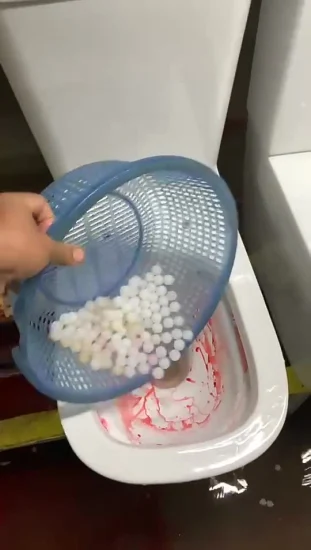Are You Allowed to Flush Food in the Toilet?
Are You Allowed to Flush Food in the Toilet?
Blog Article
We've discovered this article involving Think Twice Before Flushing Food Down Your Toilet down the page on the web and accepted it made good sense to talk about it with you over here.

Intro
Many people are frequently faced with the dilemma of what to do with food waste, especially when it pertains to leftovers or scraps. One usual concern that arises is whether it's alright to flush food down the toilet. In this write-up, we'll look into the reasons individuals may take into consideration purging food, the repercussions of doing so, and alternate approaches for proper disposal.
Reasons that individuals could take into consideration purging food
Lack of understanding
Some people may not understand the possible injury triggered by purging food down the commode. They may incorrectly believe that it's a harmless practice.
Convenience
Purging food down the bathroom might appear like a quick and very easy option to taking care of undesirable scraps, particularly when there's no neighboring trash can available.
Idleness
In some cases, people might merely select to flush food out of large idleness, without thinking about the effects of their activities.
Effects of flushing food down the bathroom
Environmental effect
Food waste that ends up in rivers can contribute to pollution and harm marine communities. Additionally, the water utilized to purge food can stress water sources.
Plumbing concerns
Purging food can lead to clogged up pipes and drains pipes, causing costly plumbing repair work and inconveniences.
Types of food that ought to not be flushed
Fibrous foods
Foods with fibrous structures such as celery or corn husks can get tangled in pipelines and trigger clogs.
Starchy foods
Starchy foods like pasta and rice can soak up water and swell, bring about clogs in pipes.
Oils and fats
Greasy foods like bacon or food preparation oils ought to never be flushed down the toilet as they can solidify and trigger clogs.
Proper disposal techniques for food waste
Using a waste disposal unit
For homes geared up with garbage disposals, food scraps can be ground up and flushed with the pipes system. Nonetheless, not all foods appropriate for disposal in this fashion.
Recycling
Particular food packaging materials can be recycled, decreasing waste and reducing ecological effect.
Composting
Composting is a green method to deal with food waste. Organic products can be composted and made use of to enrich dirt for gardening.
The relevance of appropriate waste monitoring
Reducing ecological damage
Correct waste management techniques, such as composting and recycling, assistance reduce air pollution and protect natural resources for future generations.
Protecting pipes systems
By staying clear of the practice of flushing food down the toilet, house owners can prevent costly plumbing fixings and preserve the stability of their plumbing systems.
Final thought
In conclusion, while it may be appealing to purge food down the toilet for benefit, it is very important to recognize the potential repercussions of this action. By adopting appropriate waste monitoring techniques and taking care of food waste responsibly, people can add to much healthier plumbing systems and a cleaner environment for all.
FLUSH FOOD DOWN THE TOILET?
FLUSHING FOOD CAN CAUSE BLOCKED DRAINS IN YOUR HOME
All of the plumbing fixtures in your home are connected to the same sewer pipe outside of your home. This outdoor sewer pipe is responsible for transporting all the wastewater from your home to the Council sewer mains. Even small pieces of food that go down the kitchen sink can cause problems for your sewer. It should therefore be obvious that flushing larger bits of food, such as meat, risks a clog in either the toilet itself or the sewer pipes. Flushing greasy food is even more problematic because oil coagulates when it cools, coating the interior lining of your pipes.
THE TOILET IS NOT A BIN
Food isn’t the only thing that people shouldn’t be flushing down the toilet. People use the toilet to dispose of all kinds of things such as tampons, makeup wipes, dental floss, kitty litter and even underwear. Water goes to great lengths to educate residents about the high costs and stress placed on wastewater treatment systems simply from people flushing the wrong stuff down the toilet. It costs taxpayers millions of dollars each year, and homeowners thousands in blocked drain repairs.
FLUSHING FOOD IS A WASTE OF WATER
Flushing food is a waste of our most precious resource - water. In June this year Level 1 water restrictions were introduced to protect water supply from drought conditions. Much of New South Wales continues to be affected by prolonged drought with recent figures revealing up to 97 per cent of the state remains in drought. Depending on whether you have a single or dual flush toilet, every single flush uses between five and 11 litres of water. In the current climate this is a huge amount of water to be wasting on flushing food that should be placed in the bin (or better yet, the compost).
https://www.jabplumbingsolutions.com.au/blog/can-you-flush-food-down-the-toilet

I recently found that content about Is it safe to flush food (especially rice) down the toilet? while surfing around the internet. Please set aside a second to distribute this content if you enjoyed it. Thanks a lot for being here. Kindly check our blog back soon.
Quote Report this page